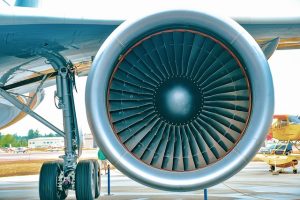
Airbreathing jet engines play an important role in the commercial aviation industry. While smaller commercial airplanes are often powered by one or more propeller engines, such as a turboprop, larger commercial airplanes typically use airbreathing jet engines. As propulsion generators, they are responsible for moving airplanes forward so that they can generate, as well as maintain, lift during flight.
Overview of Airbreathing Jet Engines
What is an airbreathing jet engine exactly? Also known as a ducted jet engine, it’s an aircraft engine that uses atmospheric air to generate exhaust gases, which it releases out the back. They are known as “airbreathing jet engines” because they literally breathe air.
Some of the benefits of airbreathing jet engines include the following:
- Produce less noise than other types of engines
- Powerful, allowing for faster flights
- Safety features like redundancy systems to protect against failure
- Simple, reliable design (see below)
How Airbreathing Jet Engines Work
Airbreathing jet engines are characterized by their propulsion method. All aircraft engines are propulsion systems. Only airbreathing jet engines, though, use atmospheric air.
The front of an airbreathing jet engine is designed to suck in air. Once inside the engine, the air will typically mix with fuel — most airplanes use aviation kerosene fuel — within a combustion chamber. Combustion will then occur, burning the air-fuel combination. The airbreathing jet engine will release the hot exhaust gases out the back, thus propelling the airplane forward.
Common Types of Airbreathing Jet Engines
All airbreathing jet engines work by compressing and heating atmospheric air, followed by releasing this pressurized and hot air out the back. However, there are several different types of airbreathing jet engines.
One of the most common types of airbreathing jet engines is the turbofan. It leverages a gas turbine engine with a ducted fan. Turbofans allow some of the atmospheric air to bypass various components like the combustion chamber. With a turbofan, the ducted fan will guide the atmospheric air through the fan.
Another common type of airbreathing jet engine is the turbojet. Turbojets leverage a gas turbine engine with a propelling nozzle. It doesn’t use a ducted fan. Both turbofans and turbofans suck in atmospheric air, but turbofans have a nozzle. Located on the back of a turbofan, the nozzle is designed to release a stream of pressurized air.
There are also ram-powered airbreathing jet engines. Also known as ramjets, they leverage the engine’s own forward motion to suck in atmospheric air.
- SEO Powered Content & PR Distribution. Get Amplified Today.
- PlatoData.Network Vertical Generative Ai. Empower Yourself. Access Here.
- PlatoAiStream. Web3 Intelligence. Knowledge Amplified. Access Here.
- PlatoESG. Carbon, CleanTech, Energy, Environment, Solar, Waste Management. Access Here.
- PlatoHealth. Biotech and Clinical Trials Intelligence. Access Here.
- Source: https://monroeaerospace.com/blog/what-is-an-airbreathing-jet-engine/



